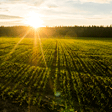- Home >
- Our Actions >
- Ambassador report
5
Comments
Let's have a cup of Coffee! |
|---|
|
Ever wondered where the Coffee you conveniently had this morning came from? Here are some quick facts about our beloved beverage? - Over 2.25 Billion cups of Coffee are consumed in the world every day. - Around 7.7 Million Ton of green Coffee beans are produced annually across 10.5 Million Hectares in over 50 countries. - The major Coffee growing regions of the World are tucked between the Tropics of Cancer and Capricorn. From Africa where it originated, the cultivation of Coffee has expanded to the East and to the West to form what is known as the Bean Belt. - Over 90% of Coffee production takes place in developing countries. - Brazil alone, where almost a third the world's Coffee is produced, over 5 Million people are employed in the cultivation and harvesting of over 3 Billion Coffee plants.
Coffee in India- - Commercial plantations of Coffee started in India during the 18th century. - Over the years, the Indian Coffee industry has earned a distinct identity on the Coffee map of the world. India is today home to 16 unique varieties of Coffees sourced from 13 distinct Coffee growing regions most of them in the southern part of the country. - In India, all the Coffee is grown under a 'well-defined two-tier shade canopy of evergreen leguminous trees'. - India's Coffee regions are one of the 25 biodiversity hotspots in the world. - India has emerged as the seventh largest Coffee producer globally after Brazil, Vietnam, Columbia, Indonesia, Ethiopia and Honduras. - India accounts for only 4-5 per cent of the world's output, but exports 70-80 per cent of its produce.
Know your Coffee- - There are two main species of Coffee beans in the world viz. Coffee Arabica and Coffee Robusta. - More than three-quarters of the beans that are sold in the world today are Coffea Arabica, most of the remaining bulk are Coffea Robusta. - Other bean species include: Benghalensis (Bengal Coffee), Coffea Congensis (Congo Coffee) Coffea Liberica (Liberian Coffee), Coffea Excelsia, (another Liberian Coffee), Coffea Stenophylla (Sierra Leonian Coffee), Coffea Bonnieri, Coffea Gallienii and Coffea Mogeneti, however these beans are non-existent in the export market. What suits the Coffee Production? -Semi Tropical Climate : The Coffee tree requires heat, humidity and abundant rainfall. -Temperature : Coffee requires an average temperature between 20-27 Deg C. Although it is grown in day temperature up to 32 Deg C. -Rainfall : Coffee needs abundant rainfall, i.e., 100 to 200 cm annually. -Shade : Direct sunlight is harmful for Coffee plants. Leguminous plants are used which provide shade and enrich soil with nitrogen. -Topography : Coffee is grown on slopes having height between 600 to 1,800 meters. The suitability of slopes for Coffee is because these are well-drained and cooler. -Soil : The ideal soil is one with a good sub-surface drainage, and one that is easily workable. The presence of humus and other nitrogenous matter in the soil is an advantage. -Economic Conditions : Intensive labor requirement, large investment in terms of capital, transportation cost, market fluctuations.
Where's my Coffee?! What if you woke up and find no cup of Coffee around? It's hard to imagine a world without Coffee – not just because of all the drowsy mornings, but because of the Millions of farmers and their family who rely on it for living. - A warming world and extreme weather, including both heavy rains and drought, are making it harder to grow Coffee in many regions. - By 2050, researchers said, the amount of suitable Coffee farmland is expected to have halved. - Wild Coffee is expected to be wiped from the face of the planet by the year 2080.
But what's harming my Coffee? The global Coffee crop is increasingly threatened by climate change and diseases and pests.
Climate Change The Earth's rising temperatures are fueling longer and hotter heat waves, more frequent droughts. Drought in Brazil cut Coffee production by around 30%. Even a half degree of temperature change can make a region that used to be a Coffee gold mine unsuitable. Moving production to higher altitudes is not always feasible and can be especially difficult for the small farmers that make up 80-90% of Coffee growers. Every 1 Deg C rise in minimum temperature will result in annual yield losses of approximately 137 kg per hectare. Yields are currently 50% lower than they were in 1960. Fungal Attacks For nearly six years, a fungus that's commonly known as Rust has killed so many Coffee trees in Central America that scientists have speculated the region could lose up to 40% of its Coffee crop. Temperature and heavy rain have helped Coffee Leaf Rust spread rapidly, destroying crops. Pests like the Coffee Berry Borer are spreading for the same reasons. Improper Pollination We often talk about the declining populations of Bees — how Bee numbers are going down year after year, with no clear solution in sight. But we don?t realize that Bees are the unsung heroes of our day to day meals, pollinating much of what the world eats and drinks. Coffee is one of those plants that can pollinate itself and does produce some fruit but the fruit is bigger and heavier if it is pollinated by Bees. Coffee is also greatly dependent on Bees to pollinate. Increasing Demand Over the past 15 years, consumption of the drink has risen by 43% - but researchers are warning that the world's most popular Coffee, Arabica, is under threat. Losing genetic resources The long-term success of Coffee cultivation relies on the availability of genetic diversity. There are 19 Coffee germplasm banks around the world, each containing a mixture of commonly cultivated species and varieties as well as wild Coffee. A germplasm collection is a 'bank' for Coffee's genetic diversity that can be drawn upon by Coffee breeders to solve current or future problems facing the crop. But genetic resources protected in germplasm banks is threatened by lack of funding. The cost of failing to act to preserve Coffee's genetic resources could be catastrophic for the entire Coffee industry. Any one Coffee tree in a threatened germplasm collection could contain a trait that could protect against devastating droughts or crop pests.
But on the flipside... Aggressive Coffee plantation can lead to Deforestation and Soil Erosion - To overcome the shortage of Coffee production, conventional production methods can lead to unchecked agricultural expansion that threatens forests and wildlife. - The trees are cut down, Coffee is planted and within a few years the soil is depleted of nutrients from unsustainable practices and the farm is forced to move to a new location, further devastating the habitat of wildlife, plants and foods for humans and animals. - The forests also contain 45% of the life on Earth, help keep greenhouses gases at healthy levels, recycling 20% of the world's carbon dioxide, provide food for humans and animals, and have provided us with countless health benefits. - It might lead to a situation akin to the Palm Oil threatening the Orangutans! A glimpse of hope... It's not a completely hopeless scenario - cutting emissions and limiting warming to 1.5 Deg C would make a big difference, both for individual Coffee lovers and for the 120 Million people who make a living from the Coffee supply chain. If we sit by and wait until the impacts of climate change are so severe that is impacting our supply chain then that puts us at a greater risk. We really need to address this issue now! On International Coffee Day (October 1St) let us pledge to do our bit to safeguard the beloved Coffee. At the least, let us start with spreading the caution?
References http://www.zmescience.com/ecology/climate/climate-change-Coffee-bee-14092017/ http://www.sustainablebabysteps.com/Coffee-facts.html https://worldCoffeeresearch.org/work/global-Coffee-conservation-strategy/ http://fortune.com/2015/06/02/Coffee-snobs-this-brew-will-get-pricier-thanks-to-climate-change
|

|
|
|










 Previous : Pesticides: Dangers of pestici...
Previous : Pesticides: Dangers of pestici...









5 Comments
Dear Samiksha! Thank you very much for your report. Now I know that 'the global Coffee crop is increasingly threatened by climate change and diseases and pests'. I did not about it.
Posted 09-10-2017 11:36
Hi, Samiksha! Lots of people depend on coffee-farming for their taste or for their life. Whatever we rely on it for, coffee farming is now a necessary industry which always follows us.
But there are both pros and cons of coffee farming as you mentioned. I think we should start with a precise understanding of them to fix surfaced problems.
Spreading the caution of coffee farming is needed, and we have to find out appropriate conditions to handle climate change, diseases, and pest problems to grow coffee. Thanks for your very informative report!
Posted 04-10-2017 22:34
Hi, Samiksha! Thank you for your very well-written article on coffee farming. Considering what a big industry it is (and how many families rely on it for a living), it's pretty alarming that there are so many threats to it. Out of the many factors threatening coffee farming, climate change and the decrease in the bee population are global environmental problems that we have been trying to solve for years. I sure hope that the solution that you have suggested - cutting emissions and limiting warming to 1.5 Deg C - can be made a reality, to protect the coffee industry and the many people working in it. Great work!
Posted 03-10-2017 11:49
Workers and their families in coffee producing countries will be threatened
Posted 03-10-2017 05:14
I feel good knowing such amazing impacts coffee delivers to us.
Posted 03-10-2017 03:31